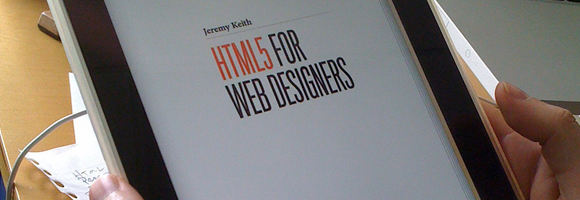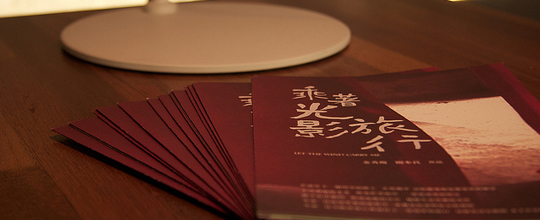Best Practices for Mobile Web Interfaces
We’ve seen tremendous growth in the mobile market since smart phones have taken over. Most of the tech-savvy adopters who understand the benefits couldn’t go a day without their precious iPhone or Android device. Websites are continually required to hold up to these standards and have adapted to fit a dire need.
The increase for demand of mobile-fashioned websites will drive webmasters into a scuttle. Website layouts have to be updated and require tweaks to the formatting so everything will display properly on mobile devices. I’ve described some best practices below and how you can re-build your site to be entirely mobile friendly.
Why You Should Stop Using CAPTCHAs
There are few amongst us who won’t have, at some point or another, filled in a CAPTCHA code. CAPTCHA stands for “Completely Automated Public Turing test to tell Computers and Humans Apart” and they are most commonly used to stop automated submissions of web forms, such as registration or contact forms.CAPTCHAs are widespread, but are they actually damaging the usability of your website? I would argue that there are better alternatives to CAPTCHAs and that you should break the habit of using them on your sites.
Read More
The Business Side of Design
The bottom line. Something you use a majority of your resources and strategy to maintain. You make sure your costs are under control, you manage your supply chain effectively, your financial side is running like a well oiled machine. So what else can you do to make your business more successful?Read More
Where is the Future of Web Design?
Everything seems to be moving at such a faster pace than it used to. We’re seeing instantaneous developments and access to information like never before through the likes of Google and Wikipedia. All of this information has me questioning where the future of web design is heading.Although it’s not so easy to read the future we can make some heavy conclusions and predictions about where things are heading. With current trends in the design landscape unfolding we’re starting to see paths illuminate and new ideas sprouting up. Those of us who follow these trends will be the designers who can rise above the rest and fill into the new age of technology.
Read More
Giving Your Older Web Designs a Refresh
Every once in a while it doesn’t hurt to give your website design a refresh. It helps to remove older blocks of code which were slowing load times and costing you pageviews. It can also help to re-evaluate what you’re trying to do with your site and how your audience should interact with each page element.I’ll be going over a few tricks to ease the process of a website refresh. The redesign process isn’t something that should be happening weekly, but it is a powerful process that should be applied to your site every so often. If you’re starting to feel lackadaisical about your site’s design that may be a clue you could use a refresher.
Read More
How to Identify a Font
What is the font used for the title of Friends? How about the typeface of that old copy of Moby Dick you picked up at that garage sale? The back of your Starbucks pastry bag? And please tell me, how can you find the font on a worn out birthday card that your client wants you to replicate?Graphic designers are consistently asked to use a client’s nameless favorite font. Thanks to the typeface renaissance spurred by increasingly fantastic font tools and talented foundries, the font identification game is getting harder by the minute. Unless you happen to be a first-class typeface aficionado, you probably aren’t going to be able to call the latestGothicsans serif, such as Avenir, Geogrotesque, or any of the approximately 100,000 other fonts available today, by name.
Read More
Increase Your Website’s Effectiveness with Confident Copy
Want to increase your website’s effectiveness? To have a higher conversion rate: more of your website’s visitors become subscribers, customers, members? You can increase the likelihood of that happening by having your message be more clear and confident. In other words: increase your website’s effectiveness with confident copy.It might seem like forehead-slapping common sense, but a lot of web designers, freelancers, and entrepreneurs get caught up in design tweaks, form designs, and other details that don’t matter nearly as much as simply being more confident with their message. By simply having more confident copy, you can increase the likelihood of that next visitor converting into a new subscriber, customer, or member.
Read More
Simple Flow: Minimalism in Web Design
There are so many techniques when it comes to web design, it’s hard to get a full grasp on all of them. Minimalism is one of the few which stand out from the crowd in a seemingly ubiquitous flow. The trend follows the concept of keeping things simple and easy to work with.Removing clutter from pages helps users focus their attention on the things that really matter. Page content, images, contact information, and the presentation hierarchy that removes gradients and web 2.0 distractions. Check out a few of the ideas below in regards to minimalistic designs and see how you can incorporate these into your own projects.
Read More
Bing vs Google: A Usability Face-Off
We all know Google and Bing, and probably use one or both of them on more or less a daily basis. Search results are generally the defining factor that makes us have a good experience, and I suspect most of us don’t give too much consideration to the usability of the services.However, with hundreds of millions of people using both of the services each and every day, even subtle changes in the usability of the two could add or shave off huge amounts of time for the two, and each small change can lead to a more enjoyable, more usable experience.
Read More
Must Know Usability Tips for Web Designers
The hot topic in design news is all about usability. Developers must concern themselves with properly functioning interfaces and applications via the web. However as designers we must tackle projects from a different angle, trying to design beautiful webpages which also run smoothly from a user’s standpoint.It’s not to say these ideas haven’t been around over the past few years. It just so happens that recently the web has undergone a paradigm shift and we’re entering a powerful new information era.
Read More










Comments
Post a Comment